#botanic taxonomy
Explore tagged Tumblr posts
Photo
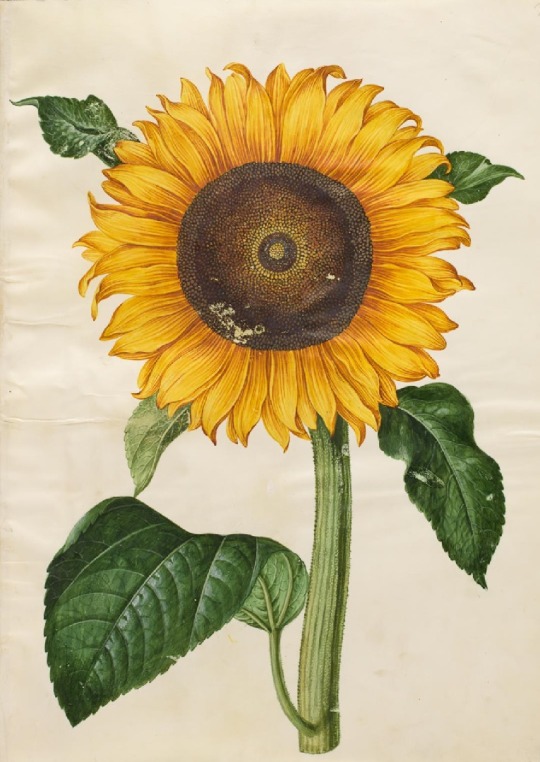




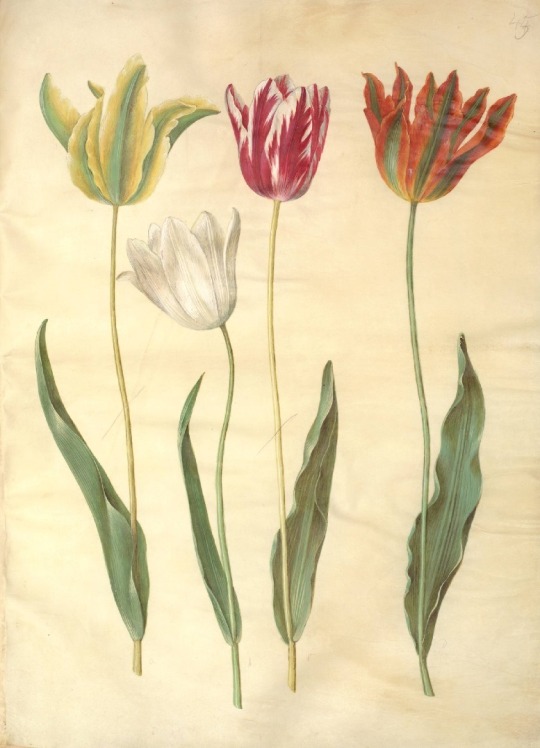
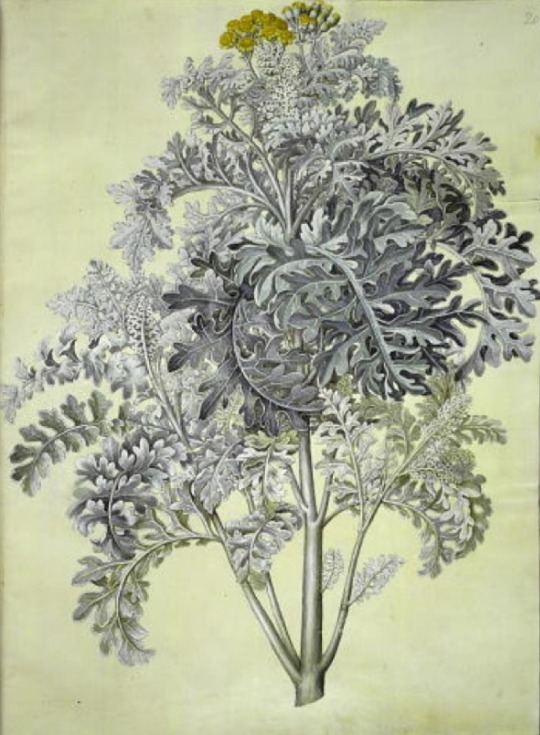

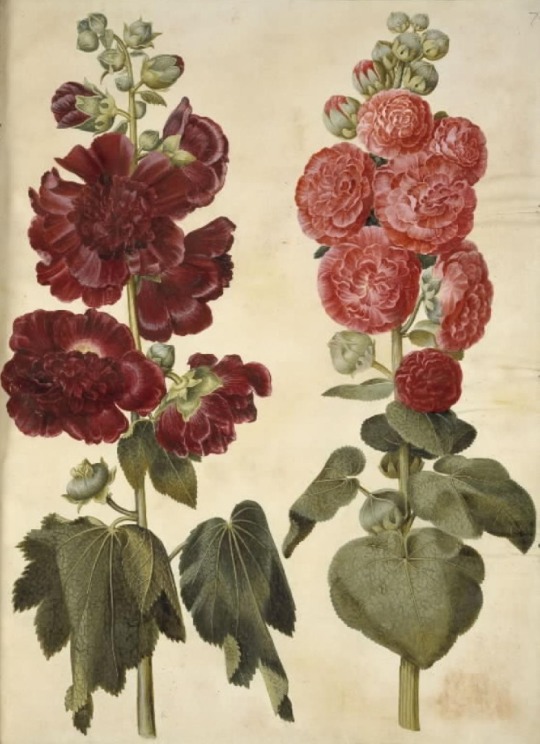
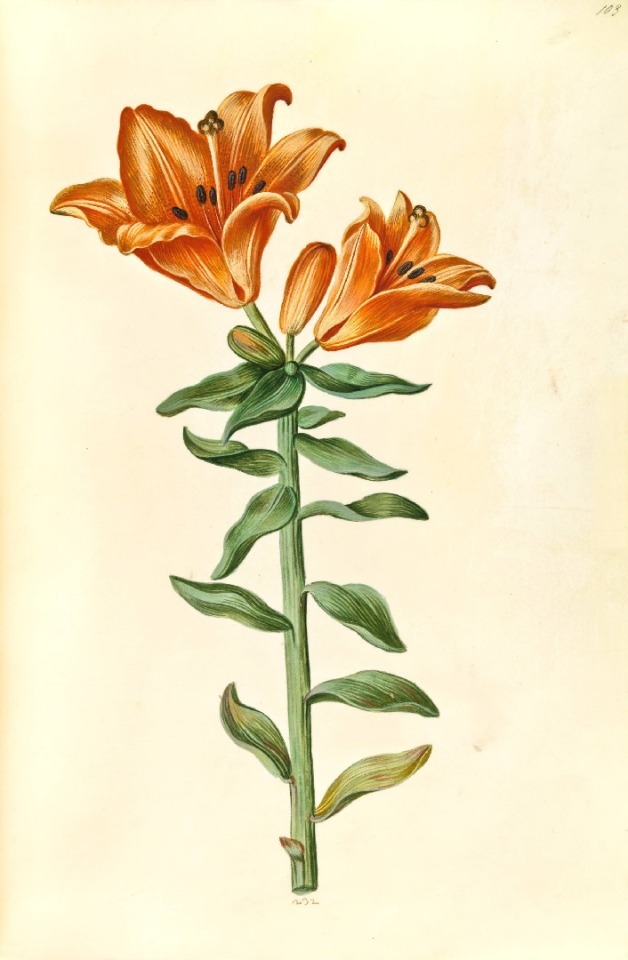
Hans Simon Holtzbecker
Common sunflower - Mourning iris - Silk peony - Crown emperor
Opium poppy - Garden tulip - Silver ragwort - English iris
Hollyhock - Fire lily
from the Gottorf Codex (Florilegium), 1649-59
#hans simon holtzbecker#book illustrations#gouache paintings#naturalist art#old art#botanic taxonomy#baroque garden#floral design#german artist#national gallery of denmark#flowers are pretty
26 notes
·
View notes
Text
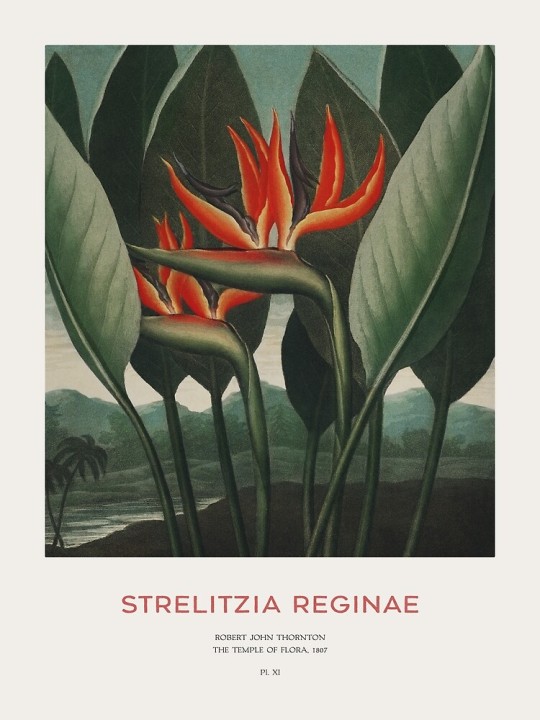
Crane Flower or Strelitzia Reginae
Strelitzia reginae is a species of flowering plant indigenous to South Africa. An evergreen perennial, it is widely cultivated for its dramatic flowers. In temperate areas it is a popular houseplant.
Available now on Redbubble
#crane flower#Strelitzia#flowercore#flowers#cottagecore#botany#botanical#artists on tumblr#biodiversity#nature#educational#scientific illustration#taxonomy#redbubble
14 notes
·
View notes
Text
Stranded in another world, with no hope of going back or any magic to defend themselves with, this is the anecdote of the Ramshackle Prefect Yuulis Crowley's first week in another world called Twisted Wonderland.

warning : mentions of blood & dissection, didn't beta this so :P a/n : happy april fools :D

It was a chilly morning on the Night Raven College campus, and Sam’s first day coming back to the mystery shop. Oh, how he missed the purple overlay of the wallpaper; the diamond skulls and taxonomy and other knick-knacks that seamlessly blend together to form something quite avant-garde. Speaking of knick-knacks, he remembered that his new stock of goods his ‘friends’ salvaged from who knows where should be arriving today, how exciting!
His feet skipped up and about, the keys he spun around his finger chiming as he hummed a happy tune from the Port of Jubilee. Sam wonders what kind of faces the new first years would make the first time they step into the shop, or when they meet his ‘friends’ for the first time.
Just as he was about to make a turn from Main Street, he stopped dead in his tracks. There was a pile of huge boxes at the doorstep, that must be his new goods, but there was something else, or rather, someone else. That someone–young enough to be a first year, but not wearing the school uniform–was waiting by the boxes. No student has ever been to the shop this early, and the school hasn’t allowed any of the local townsfolk to visit, so why?
“Excuse me!” Sam called out, making his way towards them, “I’m flattered that a line is already forming, but opening hours aren’t until lunch time!”
They stared blankly at him the moment he stood right in front of them. They held out a clipboard with a delivery receipt that listed the names of various magical supplies
“I’m here to on behalf of the Headmaster,” Sam barely understood them through their thick accent, “Please double check the receipt and make sure to tell of any errors.”
Since when did the Headmaster hire any couriers.....and one so young at that. Oh well, as long as Crowley’s not breaking any child labor laws, it should be alright, shouldn’t it? The shopkeep noticed that his back grew colder and colder as he went through the new inventory. He stole a small glance at the youth, turning back immediately when he saw how intently their gaze bore through his soul.
“Phew! It’s getting pretty darn cold out here!” The hand that held his keys trembled a bit, “How about we go inside to warm ourselves up a bit?”
He took back his thoughts. This was far from alright.

“--and where do these charms go, Mr.Sam?”
“By the aisle near the grimoires, next to the paper talismans,”
It’s been nearly half an hour of restocking, yet they haven’t left the store. Sam tried his best to breathe through the awkward atmosphere, but the tension was so thick he could harvest it, bottle it up and sell each for 500 madol. If only such a thing was possible, if only.
“Mr.Sam,”
He felt his shadow jump to the ceiling at the sound of their voice.
“What kind of store is this, exactly?”
“Well, since you’ve seen my wares firsthand, should you be able to tell right away?” He put on an air of faux confidence, hoping they wouldn’t notice.
“At first, I thought this was a magic supplies store, but none of them back at home sell dangerous herbs like oleander and wolf’s bane. How did you get a hold of this amount of them anyway?”
“Well, what can I say? There’s only so much exotic ingredients you can grow in the botanical gardens,”
“But, there are also basic necessities like toothpaste and clothes,” They pondered, “Come to think of it, one of the new deliveries was a box of snacks, wasn’t it?”
“That’s what happens when you’re the only tuck shop in one of the most prestigious schools in the world!” He winked, “It wasn’t easy getting ahold of most of the inventory, but you gotta do what you gotta do, don’t you agree?”
A small chuckle escaped their lips, “That’s not a bad mindset for a businessman.”
In the end, no matter how eccentric they initially seemed, a child is still a child. He felt foolish for being so afraid, what could they do when he had his friends by his side?
“By the way,” it was hard to notice how much time passed by, “Shouldn’t you go back to your dorm and change into your uniform? It’s almost time for morning classes.”
“Ah, was Mr.Sam not present during the entrance ceremony? No wonder you didn’t recognize me,”
There was some word on the street about a fiasco happening during this year’s entrance ceremony, something about the halls being lit on fire by a beast? He couldn’t believe it when one of the friends that stayed to guard the shop told him about it.
“I was deemed unworthy to be sorted into a dorm, because I possess no magical capabilities whatsoever. It seems that there was an error during the student selection process,”
“Is that even possible?” his suave expression morphed into worry, “Then, why didn’t the Headmaster send you back home?”
“He tried, but the Mirror of Darkness said something along the lines of ‘The place from whence they came from can’t be found in this world’.
“And so here I am, doing odd jobs and tasks on behalf of the Headmaster, the students and the staff of NRC,” Sam could hear a small sense of pride at their introduction, “I'm more capable than I look, please don’t hesitate to call upon me if you need any assistance.”
Of all the strange things to make their way into his shop, never in a million years would Sam expect an estranged secretary to be one of them, and one that possibly came from another world to boot. He had a feeling that this year was going to be much, much more eventful than any of the years to have come, and he couldn’t wait to see it all unfold.
“Well, it’s a pleasure to meet you, little demon,” The shopkeep tipped his hat in a fine, gentlemanly manner, “Make sure to drop by again, ‘till next time!”

The gap of knowledge between the first and second year was indeed a big leap to overcome, Crewel knew how unprepared his puppies were going to be.
But by the Great Seven, oh how much he overestimated them.
The likes of Riddle Rosehearts and Azul Ashengrotto couldn’t possibly make up for the utter incompetence these mutts have, even the students with subpar scores like Savanaclaw’s Ruggie Bucchi and Diasomnia’s Silver looked like geniuses. At best, there are students like Kalim al-Asim, who actually tries, yet their efforts seem to seep out through their ears the moment they leave class, then there’s the unpredictable ones like Floyd Leech.
He remembers how the eel turned in blank test papers, or how he mixes whatever ingredients he finds interesting together, bleeding the chemical supply. 2 days ago, he used up an entire month’s worth of imp spinal fluid during potions class. It’s not as if they were hard to get, but their effects are most potent when freshly harvested. The thought of harvesting it himself made him shudder; sure, he’s seen some grotesque imagery as an alchemy professor, but who knows how long it will take to restock if he made a report to Crowley?
Sigh. Looks like he’ll have to put practical sessions on hold for a while and haggle with Sam.
“Excuse me, is Professor Crewel here?”
The door to the alchemy lab opened, bringing the professor back to reality. Someone he has never seen before let themself in, a plastic bag in hand.
“Stay! I don’t recall allowing anyone without a lab coat to enter….!” Realization kicked in once he got a clearer look, “Huh--so it’s you, the magicless stray that caused a riot in the entrance ceremony.”
The sound of a whip resonated through the room, followed by faint chattering and murmurs from nearby students scrambling away from the alchemy lab.
“Only authorized students and staff are allowed in the lab during school hours, didn’t the Headmaster tell you?”
Most of his students would cower just by hearing his tone grow stern, yet they remained unfazed. Playing bold now are we? Looks like he’ll have to teach them a lesson.
“The Headmaster,” they brought the plastic bag to his chest, “said that the lab’s storage room needed restocking.”
Ah, was that it? Making a child do his job; how much of a slave driver was Crowley? Knowing Crowley’s tardiness, it was probably something he had already spent his paycheck on, although the bottom of the bag was unusually cold.
Curiosity getting the better of the professor, he untied the knot and opened the bag. His face recoiled, from the shock of seeing the contents. Aurora moth’s scales--he had only requested these a few days ago! Not to mention all of that translucent mucus coating the scales, how long ago were these harvested?
“Is there something wrong, Professor?”
Crewel almost forgot about the intruder standing in front of him, “No, it’s just--this is the first time I've seen them so...fresh. The ones Crowley buys usually come preserved in bottles.”
“That may be because I just harvested them this afternoon,” they said nonchalantly.
“You--You what?!” the professor didn’t even try to mask his disgust, “You did this yourself?”
Their head tilted sideways, akin to a confused child.
“The Headmaster said that the locals needed help with pest control, so I’d thought I’d lend a hand, and they let me do whatever I wanted with the moths as payment, ” Despite having experience with that sort, Crewel’s stomach began to swirl, “The Headmaster gave me permission too,”
A scowl grew on his face. Typically a moth would've been killed humanely before their wings were plucked to relax their ligaments, but seeing the mess clinging to the wing's ends, it's clear that they didn't consider such option. He couldn't decide if they had a strong stomach to withstand seeing large bugs squirm underneath them, or an uneducated fool.
“Professor, are you alright? You look exhausted,”
He snapped back to reality that instant, rubbing circles around his temple. Pull yourself together, Crewel, he edged himself, you’ve lost your composure twice already. Maybe he just needed a good serving of raisin butter with wine on the side, or a joyride on his prized car. He glanced back at the dismembered wings, at least he got what he wanted. Still, this has never happened before, perhaps if he could take advantage of this situation….
“Tell me, pup. Since you have...the appropriate experience to harvest wings, how good are you at dissecting imps?”
They pondered for a while. It’s the most animated he’s seen of them, “I suppose I do how to extract fluids, their lymph is a versatile ingredient in many types of salves after all. Although it has been a while since I’ve ever needed to.”
Bingo
“Then, how about spinal fluid?”
It was their turn to be surprised, “I-I’ve never done that on an imp before. Just think of the amount of imps needed to fill a single bottle.”
“Tell you what, pup. Are you interested in a side-job?”
Without giving them a chance to respond, Crewel tossed a few madol and a map of the campus in their direction, “There are some common imps causing trouble in the college lately coming from who knows where. If you can deal with them, I’ll give you the other half of the payment, and of course--.”
He shoved them a basket full of empty test tubes, slinging it over their shoulder, “Fill every single test tube here to the brim before tomorrow's Science Club activity, I won't take no for an answer.”
And with that, they were pushed out of the alchemy lab. Spending their first sleepless night in another world catching imps wasn’t on their bucket list. Sighing heavily, they picked up their feet and staggered.
‘I wanted to creep him out a little,’ they thought, ‘but I ended up being the one getting creeped out.’

For such an important place, why did Crowley’s office have to be in a place so out of reach? For all his years in Night Raven College, Crewel always dreaded sending weekly reports to the Headmaster’s office, he could feel his leg muscles ache as he knocked against the two large gates. He peeked inside the office to look for the Headmaster.
“There you are, professor! What took you so long?”
There he was, sitting cross-legged on his desk as the portraits of the Great Seven floated up and about. Trein was there as well, as cold as usual and showing no sign of fatigue, peering at him as if he could see through everything. Maybe it was because he had a 20 year head start, either way, it was irritating how he was the only disheveled one.
“I don’t know, maybe it was the countless stairs I have to climb every week to submit a report when you can simply hire a secretary to fetch them for you?”
The crow simply smiled, already figuring out a solution to Crewel’s ire, “How has the first week of teaching been for you, professors?”
“I don’t know which is greener, the topiary maze in the Heartslabyul dorm, or the new puppies I’m in charge of,” Crewel shook his head.
“For once, I agree,” the history professor nodded indefinitely, Lucius yawning in his arms, “But that could be said for every first year in the history of NRC.”
Dire nodded, “Seems like everything’s going smoothly then! I shall leave the future of our students in your capable hands!”
Both professors nodded in response, “As you wish, Headmaster.”
“Although, I’d like to inquire about something,” Crewel spoke up before raising his index finger to the large window. From above, the view of the setting sun looming over the campus could be seen, but his finger specifically pointed to Main Street, or rather;the magicless stray walking to the direction of the alchemy lab, with the basket in hand and the direbeast from before by their side.
“What are we going to do about that?”
Without needing to look, Trein simply closed his eyes, “If what the mirror spoke was true, then that child quite literally has no place to go back to. It comes to question how they even ended up here in the first place."
Crowley rubbed his chin. The ultimate decision lies with him, and honestly, there was nothing stopping him from just shirking them off his feathers and leaving them to fend for themselves, along with the cat-beast that terrorized the entrance ceremony.
"It would undoubtedly stain the reputation of our esteemed college if we just kicked them out," the Headmaster groaned, "Oh, why must I be plagued with such problems!"
"Best of luck to you then, Headmaster Crowley," The two professors turned their heels and left Crowley's office with not a care in the world, leaving him with his worries.
The Headmaster leaned against his chair and sighed against the beak of is mask. Dealing with the child was the last thing he wanted to do at this moment, with their odd mannerisms and such, however...
Being unable to return home wasn't an unfamiliar conundrum to the Headmaster.
Perhaps it's his boundless generosity speaking to him, but there was a pang of heavy emotion in his chest that told him he couldn't simply leave that child, Yuulis, alone. Was it guilt? or maybe atonement? Whatever it was, it overrode the rational side of his brain

Dire Crowley was the type of person to judge a book by it's cover, which is why he was surprised how his new errand runner, or rather, the new Ramshackle Prefect was able to hold up better than he expected. The reports he received from the staff members he had tasked them with helping have been amicable, and his workflow was much smoother now that he had divided the more menial tasks to someone else. He had thought he had envoked the wrath of the Great Seven with the mess that was thrown his way, but surely they were more pliant than they initially seemed, and now Crowley had a reliable aide at his beck and call.
That would've been the end of the story if Crowley's worries ended there.
Perhaps it's his intuition as a mage, one that's been sharpened by many years of experience, but there was something off about the Prefect. It was subtle enough for none of the other professors to pick up on it, perhaps not even the prefect the▅self were aware of it, but Crowley co▅ld fe▅▅ it.
The lingering mi▅▅ma ▅▅ p▅rmea▅▅ from ▅▅em, it ▅▅ ▅▅▅▅▅ ▅ ▅▅▅ M▅▅▅l▅ ▅▅ ▅no▅▅ ▅▅▅▅ ▅▅▅▅▅▅▅ ▅▅ , ▅n▅▅d f▅rom the loo▅▅ ▅, if Crowley doesn't get it under control, it might spell disaster for the mages in his beloved college.
They'd succeeded his expectations as a prefect, so why not bestow upon them another act of kindness?
A knock resounded from the door to the Headmaster's office, before creaking open. Under the candles that lit the office dimly, the prefect looked like one of the many ghosts that toiled in the campus.
"Apologies for the delay," they nodded, curtly greeting the Headmaster, "It took a while to convince Professor Trein to let me into the library archives, but I got what you asked for."
"It can't be helped, I suppose. The lecture he gave me that time still rings in my ears," Crowley picked the bundle of files off of Yuulis' hands.
"Rightfully so," the monotone in their voice wavered, "With all due respect, I don't see why what you did was necessary, nor will it benefit you or your reputation, Headmaster."
His fingers intertwined and rested over his mouth, obscuring what's left of his face. A part of him thought that Yuulis wouldn't question his actions, but it seems they had not let their guard down completely. Not that he blamed them--in a world of villains, it's wiser to play your cards right.
"I've made it quite clear that it was a mutual agreement, yes?" he says, "One day, you'll understand, once you've proven that you're worthy of carrying my secrets."
He sauntered towards them, slow and heavy footsteps circling around the prefect, "Besides, don't you want my help? You won't have to isolate yourself anymore, drifting around from place to place, worrying about hurting other people. You'll be able to live a normal life. It'd be easier for me to help you with your more personal matters like this, wouldn't you agree, my dearest nephew?"
It was probably underhanded of him to take advantage of their ignorance, but it's too late for them. The pact has been made, Crowley isn't sure whether Yuulis could feel the invisible link that binds them together as well, but the matching blue vest he gave them, their new surname, was enough to send them the message.
"It's getting late, come now, I'll walk you back to that rickety old--err, Ramshackle dorm," says the headmaster, waiting for Yuulis to trail behind him, like they usually do.
With bated breath, they come to accept their new circumstances. They step closer to the Headmaster.
"As you wish, uncle,"
#happy april fools!!!#yeeeaaaaahhhhhhhhhh#i think i wrote this for twst's first anniversary...time rlly flies lmao#i also changed some stuff from the original.. mostly cus new game info.. & such. and getting a better grasp/having different views on--#the characters#waaaaa#dont think too much on the writing pls...gdghghghg#twst#twisted wonderland#twst oc#disney twst#twst yuu#dire crowley#divus crewel#twst sam#mozus trein#yuulis crowley
204 notes
·
View notes
Note
Prynhawn da Elanor,
I'm a student in the US currently applying to universities for next year, and I have a couple of questions about Welsh universities if you have the time. I'm looking at both schools in the US and one in Wales (I managed to visit over the summer and it seemed great, loved the town and the university, and the degree that I'm interested in is very solid there), and the teaching style/expectations of students are an unknown factor. I've been taking college classes while still in highschool so I'm familiar with college-level instruction in the states, and it's not ideal for what I'm interested in studying. For example, at one of the schools I visited that is supposed to be a decent research university, the faculty were surprised that I had questions about research as an undergrad, and according to current students, the hardest part of their studies were quizzes on botanical taxonomy. So, I'm curious, what are the general academic expectations for students (especially in ecology or wildlife biology-related courses)? It seems like assessments are more practical or long-form and less quiz/multiple choice.
This got long-winded, so my apologies, and thank you for your time!
Shwmae! Happy to answer.
SO, I shall caveat this with saying that I don't really understand how higher education works in the US; it's a very different system to the UK in many ways. I'm therefore not entirely sure how to explain the exact differences. So, I'll just tell you about how it works over here rather than trying to do a comparison, if that makes sense? It means some of this will definitely feel like Water Is Wet stuff, but hopefully there'll be an exact answer in there that you can extract. Also, if you're comfortable doing so (and want to), I'm happy to talk over DM if you want slightly more specific advice involving you revealing details that otherwise might doxx you.
(Also second point, because I have danced this dance before and I know what Some Of You Lot are like when my posts start gaining traction beyond my circle of followers: in places where I do explain something that's different between the two systems, I am not saying one is better or worse than the other. Don't be a cunt about this. Work on your defensiveness and ego in your own time. I'm too busy and important for your feelings.)
Third point: I'm snipping this for length. On with the answer!
So, degrees over here are fairly fixed in terms of content and duration. Some offer a specific, set array of modules that make up the degree; others have essential core modules, and then you can choose from a small number of options until you get the required credits. But part of choosing the course for you over here is looking at the modules that make up the degree to make sure you're getting the exact focus you want; the one I teach on, for example, has a focus on practically applying environmental science, with the result that it has a very high post-graduation employment rate across a variety of environmental disciplines. Others might focus more on human geography, or environmental engineering, or climate science, or whatever else.
The reason for this is the quality assurance system in the UK. Courses have to be validated as being the right quality in terms of content, level of study, assessment practices, etc. Let's say you get a BSc from UWTSD in Environment, Sustainability and Climate Change; that comes with a quality assurance for a future employer that you have learned a specific set of skills, a specific knowledge bank, and are capable of using both in a specific way. There shouldn't be a risk, for example, that they hired someone from the same course the year before who had the same qualification as you, but turned out to not understand the dynamic processes behind sand dunes and couldn't write an official report to save their life, meaning you get passed over for the job the following year because they can't trust that your education actually means anything; if both of you have the same qualification, then the course should be meeting sufficient quality standards to ensure that you both therefore have the same knowledge and skillset.
So that's point one!
Where this works in your favour is point two: assessment. Assessment is also rigidly quality-checked, but it means you can ask a course director and immediately get an outline of what the assessment procedures are (not the precise assessment tasks, obviously; but, report vs exam vs lab practical etc will be known).
But also, yes, assessment in the UK is extremely rarely what I understand to be 'quizzes' in the US, and extremely rarely multiple choice. Rightly or wrongly, there is a definite perception in academic circles over here - even at high school level, much less university - that a multiple choice quiz is too easy to pass by guessing, and they're very looked down on as a method to assess learning.
What you'll have instead varies between modules and courses, but I can give you an idea with a couple of mine:
Level 4: Biodiversity and Ecosystem Services
No exams: two reports based on practical field/lab work, both worth 50% of the final mark
First: dissect owl pellets in the lab from two sites. Evaluate what the findings mean for the biodiversity on each site, and suggest some future site management prescriptions. 2000 words.
Second: fieldtrip to nearby woods to take allometric tree measurements and calculate carbon sequestration. Evaluate the ecosystem service provided by the woodland, and comment on site management and conservation. 2000 words.
Level 5: Coastal, Marine and Wildlife Conservation
One assignment, one exam, each worth 50% of the final mark
Assignment: Ramsey Island has far less biodiversity than neighbours like Skomer, Grassholm, etc. Research why, what was done to fix it, how well it's recovered, and suggest what should be done in the future to aid further recovery. 2500 words.
Exam: First half is a selection of short form questions to test baseline knowledge. Second half is a 50 mark essay question; choice of two topics to answer.
Level 6: Habitat Management and Building Resilience
No exams: two assignments, one before Christmas worth 30% of the mark, one in May worth 70%
First: choose a species reintroduction project of your choice, and find the habitat feasibility study carried out for it. Critique that habitat feasibility study. Put your findings into an academic poster and present it. 15 mins.
Second: using teachings from across the year, produce a habitat management plan for a site of your choosing. You need to actually visit and assess your site. 3500 words.
(L4, 5 and 6: first, second and final year of undergrad)
The idea in each case is not just to test knowledge; it's to test applied knowledge, and to teach real-world skills needed in the industry after you graduate. If you go into land management, for example, the ability to guess the right answers based on the multiple choice pattern is useless; the ability to assess a site and write up a management plan for it, on the other hand, is literally the job you're hired to do.
So, as far as research is concerned... if you mean carrying out your own research on a topic of your own choosing, the main place that happens is your dissertation in third year. But, you can start that earlier if you want. In our department, we also encourage and support any independent research a student may choose to do, even if they don't end up using it for their degree directly.
If you mean general research skills, though, those are vital to every assignment. If you only repeat back whatever papers or knowledge the lecturers have given you, and don't research independently, you will barely scrape a pass. We actively push you to learn those skills.
And then lastly, expectations for students! In higer ed, you are now an adult, and you are choosing to be here: this means that the expectation is that you're meeting the lecturers halfway, as it were. It's a mistake a lot of new students make, if they've come straight from high school - uni is just The Next Thing to do, but to them it's basically like school, so the teachers have to keep trying to teach them even if the student barely shows up or makes any effort.
But that is not so! They are no longer pupils, and I am not a teacher.
If I say to a class "Look up these papers and be familiar with the arguments before next session because we're going to have a seminar", and then someone doesn't bother because "Whoops I went out drinking and forgot to do my homework teehee", then they can get out. They are adults paying for a particular service. I have offered that service. If they think of it as homework and choose not to do it because they wanted to go out clubbing instead, then... okay. That's the choice they can make. But the consequence is, I'm not chasing after them, because I'm not a teacher, and that's not my job. Now they aren't having that session. This will have a knock-on effect for their understanding of the topic; but that's the choice they made.
(Again, before the Pissing On The Poor crowd arises: I am, very obviously, not talking about students who have other struggles that impact their academic performance. I am, very literally and clearly, talking about the 18-year-old school leavers who are still in the school mindset, and think of missing lectures as 'skiving', and on a lizard brain level think there won't be consequences to that because so far in their life, education systems have not been allowed to fail them for that behaviour.)
So, basically... you're expected to want to learn and improve, and to put the work in to do that. Not to just be there to get the degree, but to be there to learn. Adult education is collaborative between lecturer and student. We guide you, but it's your journey to take.
Anyway! I hope that is at all useful. Let me know if you want clarification on anything, or have any other questions!
75 notes
·
View notes
Text
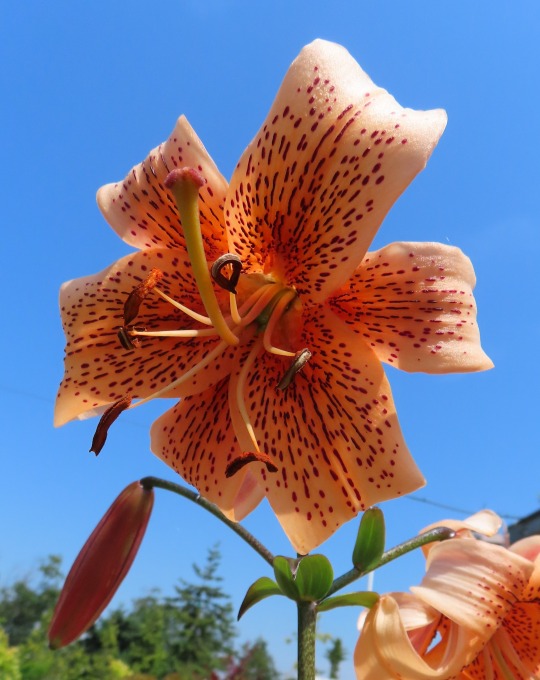
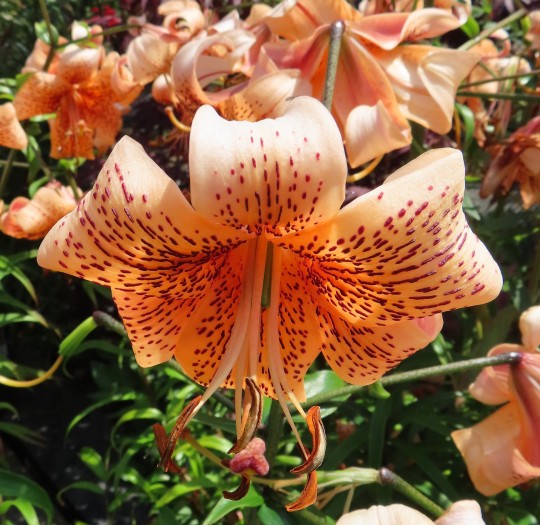
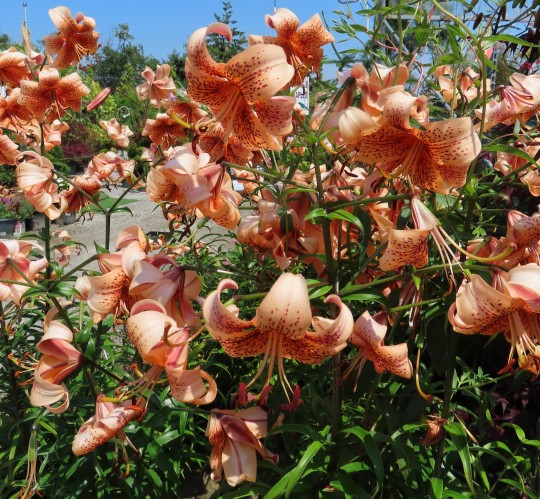
Lilium lancifolium syn. L. tigrinum (tiger lily, lance-leafed lily, var: "Splendens")
Tiger lilies always like to 'dress to impress' 'and this clump at the entrance of a local golf course is putting on quite a show. This cultivar "Splendens" has been bred for heavy flowering and can produce up to twenty-five blooms a season from a single stalk! If you plant three of them, the bulbs will reproduce sideways and you'll have a show garden full of tiger lilies in about ten years time.
The scientific name of the tiger lily used to be Lilium tigrinum, which makes sense because tigris is Latin for tiger. However it was later discovered that an earlier botanist had named this species Lilium lancifolium from the Latin lancea ("lance") + folium ("leaf"). In the hothouse world of botanical taxonomy. precedence matters, and (seriously) naming rights can make or break a botanist's career. Not that these beautiful tiger lilies, basking in the afternoon sunshine, really give a hoot about what botanists call them.
#flowers#photographers on tumblr#tiger ily#gardening#botany#fleurs#flores#fiori#blumen#bloemen#vancouver
319 notes
·
View notes
Text
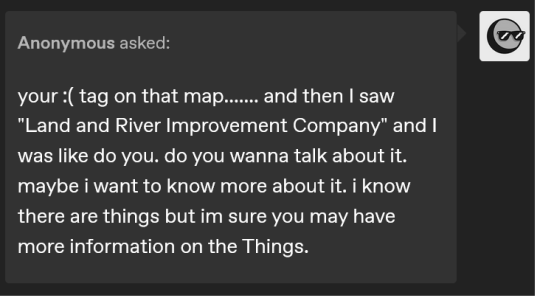
It's a big mess of hubris; the manipulative use of scientific language to legitimate/validate the status quo; Victorian/Gilded Age notions of resource extraction; the "rightness" of "land improvement"; and the inevitability of empire.

This was published in the United States one year before the massacre at Wounded Knee.
This was the final year-ish of the so-called "Indian Wars" when the US was "completing" its colonization of western North America; at the beginning of the Gilded Age and the zenith of power for industrial/corporate monopolies; when Britain, France, and the US were pursuing ambitious mega-projects across the planet like giant canals and dams; just as the US was about to begin its imperial occupations in Central America and Pacific islands; during the height of the "Scramble for Africa" when European powers were carving up that continent; with the British Empire at the ultimate peak of its power, after the Crown had taken direct control of India; in the years leading up to mass labor organizing and the industrialization of war precipitating the mass death of the two world wars.
This was also the time when new academic disciplines were formally professionalized (geology; anthropology; archaeology; ecology).
Classic example of Victorian-era (and emerging modernist and twentieth-century) imperial hubris which implies justification for its social hierarchies built on resource extraction and dispossession by invoking both emerging technical engineering prowess (trains, telegraphs, electricity) and the in-vogue scientific theories widely popularized at the time (Lyell's work, dinosaurs, and the geology discipline granting new understanding of the grand scale of deep time; Darwin's work and ideas of biological evolution; birth of anthropology as an academic discipline promoting the idea of "natural" linear progression from "savagery" to imperial civilization; the technical "efficiency" of monoculture/plantations; emerging systems ecology and new ideas of biogeographical regions).
While also simultaneously doing the work to, by implication, absolve them of ethical complicity/responsibility for the cruelty of their institutions by naturalizing those institutions (excusing the violence of wealth disparities, poverty, crowded factory laboring conditions, mass imprisonment, copper mines, South Asian famine, the industrialization of war eventually manifesting in the Great War, etc.) by claiming that "commerce is a science"; "pursuit of profit is Natural"; "empire is inevitable".
This tendency to invoke science as justification for imperial hegemony, whether in Britain in the 1880s or the United States in the 1920s and such, might be a continuation of earlier European ventures from the sixteenth to eighteenth centuries which included the use of cartography, surveying/geography, Linnaean taxonomy, botany, and natural history to map colonies/botanical resources and build/justify plantations and commercial empires in the Portuguese slave ports, Dutch East Indies, or the Spanish Americas.
Some of the issues at play:
-- Commerce is "A Science". Commerce is shown to be both an ecological system (by illustrating it as if it were a landscape, which is kinda technically true) and a physiological system (by equating infrastructure/extraction networks with veins) suggesting wealth accumulation is Natural.
-- If commerce/capitalism are Natural, then evolutionary theory and linear histories suggest it is also Inevitable (it was not mass violence of a privileged few humans who spent centuries beating the Earth into submission to impose the Victorian/Gilded Age state of things, it was in fact simply a natural evolutionary progression). And if wealth accumulation is Natural, then it is only Right to pursue "land improvement".
-- US/European hubris. They can claim to perceive the planet in its apparent totality (as a globe, within the bounds of extraterrestrial space as if it were a laboratory or plantation). The planet and all its lifeforms are an extension of their body, implying a justified dominion.
-- However, their anxiety and suspicions about the stability of empire are belied by their fear of collapse and the simultaneous US/European obsession at the time with ancient civilizations, the "fall of Rome", classical ruins, etc. At this time, the professionalization of the field of archaeology had helped popularize images and stories of Sumer, Egypt, the Bronze Age, the Aegean, Rome, etc. And there was what Ann Stoler has called an "imperialist nostalgia" and a fascination with ancient ruins, as if Britain/US were heirs to the legacy of Athens and Rome. You can see elements of this in the turn of the century popularity of Theosophy/spiritualism, or the 1920s revival of "classical" fashions. This historicism also popularized a sort of "linear narrative" of history/empires, reinforced by simultaneous professionalization of anthropology, which insinuated that humans advance from a "primitive" state towards modernity's empires.
-- Meanwhile, from the first decades of the nineteenth century when Megalosaurus and Iguanodon helped to popularize fascination with dinosaurs, Georgian and later Victorian Britain became familiar with deep time and extinction, which probably contributed to British anxiety about extinction, imperial collapse, lastness, and death.
-- Simultaneously, the massive expansion of printed periodicals allowed for sensationalist narrativizing of science.
-- The masking of the cruelty in a euphemism like "land improvement". Like sentencing someone to a de facto slow death and deprivation in a prison but calling it a "sanatorium" or "reformatory". Or calling the mass amounts of poor, disabled, women, etc. underclasses of London "unfortunates". Whether it's Victorian Britain or early twentieth century United States: "Our empire is doing this for the betterment and advancement of all mankind."
-- If an ecosystem is conceived as a machine, "land improvement" actually means monoculture, high-density production, resource extraction, concentration.
-- The image depicts the body is itself is also a mere machine (dehumanization, etc.). And if human bodies are shown to be also systems, networks, machines like an ecosystem, then human bodies can also be concentrated for efficiency and productivity (literal concentration camps, prisons, factories, company towns, slums, dosshouses, etc.). This is the thinking that reduces humans and other creatures to objects, resources, to be concentrated and converted into wealth.
And so after the rise of railroads and coal-power and industrial factories in the earlier nineteenth century, the fin de siecle and Edwardian era then saw the expansion of domestic electricity, easier photography, telephones, radio, and automobiles. But you also witness the spread of mass imprisonment, warplanes, and machine guns, etc. And in the midst of this, the Victorian/Gilded Age also saw the rise of magazines, newspapers, mass media, pop-sci stuff, etc. So this wider array of published material, including visual stuff like maps and infographics could "win over" popular perception. This is nearly a century after the Haitian Revolution, so more and more people would have been able to witness and call out the contradictions and hypocrisies of these "civilized" nations, so scientific validation was important to empire's public image. (Think: 100 years prior, everyone witnessed widespread revolutions and slave rebellions, but now the European empires are still using indentured labor, expanding prisons, and growing even more powerful in Africa, etc. An outrage.)
Illustrations like this ...
It's people with power (or people with a vested interest in these institutions, people who aspire to climbing the social ladder, people who defend the status quo) looking around at the general state of things, observing all of the cruelty and precarity, and then using scientific discourses to concede and say "this was inevitable, this was natural" and not only that, but also "and this is good".
Related reading:
Peoples on Parade: Exhibitions, Empire, and Anthropology in Nineteenth-Century Britain (Sadiah Qureshi, 2011); The Earth on Show: Fossils and the Poetics of Popular Science, 1802-1856 (Ralph O’Connor); "Science in the Nursery: the popularisation of science in Britain and France, 1761-1901" (Laurence Talairach-Vielmas, 2011); Citizens and Rulers of the World: The American Child and the Cartographic Pedagogies of Empire (Mashid Mayar); "Viewing Plantations at the Intersection of Political Ecologies and Multiple Space-Times" (Irene Peano, Marta Macedo, and Collette Le Petitcrops); “Paradise Discourse, Imperialism, and Globalization: Exploiting Eden" (Sharae Deckard); "Forgotten Paths of Empire: Ecology, Disease, and Commerce in the Making of Liberia's Plantation Economy" (Gregg Mitman, 2017); Imperial Debris: On Ruins and Ruination (Ann Laura Stoler, 2013)
Fairy Tales, Natural History and Victorian Culture (Laurence Talairach-Vielmas, 2014); Mining the Borderlands: Industry, Capital, and the Emergence of Engineers in the Southwest Territories, 1855-1910 (Sarah E.M. Grossman, 2018); Pasteur’s Empire: Bacteriology and Politics in France, Its Colonies, and the World (Aro Velmet, 2022); "Shaping the beast: the nineteenth-century poetics of palaeontology" (Talairach-Vielmas, 2013); In the Museum of Man: Race, Anthropology, and Empire in France, 1850-1960 (Alice Conklin, 2013); Inscriptions of Nature: Geology and the Naturalization of Antiquity (Pratik Chakrabarti, 2020)
#abolition#ecology#landscape#colonial#imperial#haunted#modernity#temporal#indigenous#multispecies#temporality#tidalectics#my writing i guess idk#intimacies of four continents#my writing i guess#geographic imaginaries#black methodologies#indigenous pedagogies
97 notes
·
View notes
Text
this was a funny line to me, a mushroom hunter, because December is a perfect time to find yellowfoot and late oyster, even far north. Any forager worth their salt will dry shrooms, too, so they can eat like a king any month of the year. Plenty of excuses for winter shroomies, if only the lads could think on their feet!
mushrooms and salad….in DECEMBER??
#I'd assume AS would know about the winter shrooms - they have circumboreal distribution#then again mushroom hunting is a weird hobby and knowing someone is the price of entry#there is no such thing as a saprophytic plant - they're mycoheterotrophs - so that really WOULD be unknown to science#really though we thought they were and recently discovered they're MHTs instead#if I were a character in the Witcherverse I'd be that annoying scholar on the boat yammering about amphipod taxonomy#I still do botanical field work for the uni because I'm a glutton for punishment
83 notes
·
View notes
Text
After six days of heated discussions, 556 researchers at the International Botanical Congress in Madrid conducted a secret ballot vote on whether to eliminate a “c” in more than 200 scientific names of plants.
On Thursday last week, the measure passed 351 to 205, reports Nature News’Ewen Callaway. The nomenclature change will modify the names of species with derivatives of the word caffra, an apartheid-era racial slur used against Black people in southern Africa, to derivatives of “afr,” signaling the species’ African origins. For example, the coast coral tree Erythrina caffra will be called Erythrina affra. This decision marks the first time taxonomists have voted in favor of changing offensive scientific names.
“This is an absolutely monumental first step in addressing an issue that has become a real problem in botany and also in other biological sciences,” botanist Sandy Knapp of the Natural History Museum in London, who managed the weeklong nomenclature session, tells the Observer’s Robin McKie. “It is a very important start.”
17 notes
·
View notes
Text

When and why yellow was first applied to people of East Asian descent is rather murky.
The process occurred over hundreds of years. As some scholars have noted, it's not as if there were people with yellow skin. The whole "yellow equals Asian" thing had to be invented. And in fact, there was a time when there was no such thing as "Asian" — even that had to be invented.

Enter Carl Linnaeus, an influential Swedish physician and botanist now known as the "father of modern taxonomy." In 1735, Linnaeus separated humans into four groups, including Homo Asiaticus — Asian Man. The other three categories, European, African and American, already had established — albeit arbitrary — colors: white, black and red. Linnaeus, searching for a distinguishing color for his Asian Man, eventually declared Asians the color "luridus," meaning "lurid," "sallow," or "pale yellow."
I get this bit of history from Michael Keevak, a professor at National Taiwan University, who writes in his book Becoming Yellow: A Short History of Racial Thinkingthat "Luridus also appeared in several of Linnaeus's botanical publications to characterize unhealthy and toxic plants."
Keevak argues that these early European anthropologists used "yellow" to refer to Asian people because "Asia was seductive, mysterious, full of pleasures and spices and perfumes and fantastic wealth." Yellow had multiple connotations, which included both "serene" and "happy," as well as "toxic" and "impure."
He tells me that there was "something dangerous, exotic and threatening about Asia that 'yellow' ... helped reinforce."
Which might explain why the fear that East Asian countries would take over the West became known as yellow peril.

In 1956, Marvel's short-lived Yellow Claw comic featured a villain of the title's name. He was drawn with a bald head, long scraggly beard, slanted eyes and, yes, fingers that resembled claws. True to the name, his skin had a distinct yellow hue.
That was all make-believe. The real-life consequence of vilifying a race included things like the Chinese Exclusion Act of 1882, which banned Chinese immigration to the United States until 1943; the violence against hundreds of Filipino farmworkers in Exeter and Watsonville, Calif., who were mobbed and driven out of their homes by white Americans in 1929 and 1930; and the incarceration of more than 100,000 Japanese Americans during World War II.
For as long as Asians have lived in the United States, white people have been trying to label us: who we are, what we look like and how we should be described. It was also white people who defined our terminology — for many decades, "Orientals" was the moniker of choice. (And when people hurled slurs at us, we've been called Chinamen, Japs, gooks, Asiatics, Mongols and Chinks.)
That started to shift in the 1960s.
That's when the term "Asian American" was born. At the time, it was linked to political advocacy. Yuji Ichioka, then a graduate student and activist at the University of California, Berkeley, who would later become a leading historian and scholar, is widely credited with coining the term.
This period, often referred to as the Yellow Power Movement, was one of the first times these disparate people — Korean Americans, Vietnamese Americans, Japanese Americans, Indian Americans, Laotian Americans, Cambodian Americans, to name only some — grouped themselves under one pan-ethnic identity.

There was power in numbers, which Ichioka knew as founder of the Asian American Political Alliance. In a��letter and questionnaire to new members, AAPA made clear that its organization was not just advocating for the creation of Asian American studies courses, but for broader social causes. That included adopting socialist policies and supporting the Black Liberation Movement, the Women's Liberation Movement, and anti-Vietnam and anti-imperialist efforts.
Spurred in part by the activism of the times, the term "Asian American" rose to popularity. It also helped that the Immigration and Nationality Act of 1965 was passed, allowing an influx of Asian immigrants to the U.S.
But over the years, the term Asian American revealed itself to be a complicated solution to the problem of identity.
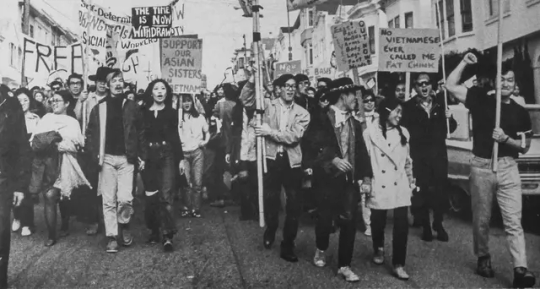
For one thing, most people who technically fit into the "Asian American" category refer to themselves based on their ethnic group or country of origin, according to the National Asian American Survey (NAAS).
Karthick Ramakrishnan, a professor at the University of California, Riverside, and the leader of NAAS, says he and his colleagues found that most Americans think of "Asian Americans" as East Asians.
Karen Ishizuka, who wrote Serve the People: Making Asian America in the Long Sixties, says that "Asian American" is still an important identifier because of the political power it has carried for decades. But it's crucial for people to be educated about what it once meant, she says, because the term has become "more like an adjective now, rather than a political identity."
Ramakrishnan and Ishizuka seem to reinforce why I've been searching for a term like yellow. In all my conversations about this issue, I've found myself remarking how the question of��"What about yellow?" feels so hair-pullingly existential. Maybe it's because Asian American seems like it has been watered down from activism to adjective. I find myself wanting a label that cuts a little deeper.
In 1969, a Japanese American activist named Larry Kubota wrote a manifesto called "Yellow Power!" that was published in Gidra, a radical magazinecreated by Asian American activists at the University of California, Los Angeles.
His words were a rallying cry. "Yellow power is a call for all Asian Americans to end the silence that has condemned us to suffer in this racist society and to unite with our black, brown and red brothers of the Third World for survival, self-determination and the creation of a more humanistic society," he wrote.
Kubota wasn't the only one using yellow in a new and different way.
Ishizuka tells me about a bunch of different groups in the 1960s and 1970s: Yellow Seeds was a radical organization in Philadelphia that published a bilingual English-Chinese newspaper of the same name. The Yellow Identity Symposium was a conference at Berkeley that helped ignite the Third World Liberation strikes. The Yellow Brotherhood was an Asian group made up mostly of former gang members in Los Angeles that tried to disband gangs and curb drug addiction. Yellow Pearl, a play on "yellow peril," was a music project started by an activist group in New York's Chinatown.
I call up Russell Leong. He is a professor emeritus at UCLA and was the longtime editor of the radical Amerasia journal. As a kid, he used to make Yellow Power posters in San Francisco's Chinatown.
"Do you call yourself yellow?" I ask him.
"That's an interesting question," Leong says. "If I'm with a group of yellow people like my close friends, I'll call myself a Chink, a Chinaman, a yellow. But in public, I'm not gonna call anyone else that .... it depends what I'm comfortable with. It's the same with my English or Chinese name. Sometimes I'll use my American name. Sometimes I'll use my Chinese name."
Whatever the word, he adds, "I think it's better that we have more words to describe ourselves."
I get it. Despite the incompleteness of any one term, together they can become a powerful tool.
Still, if there were no term like "Asian American" — if it didn't exist, if we gave up on it entirely — then what could we have to anchor ourselves? After all, it's not just about a word; it's about an entire identity.
Ellen Wu, the historian from Indiana, digs into that point: "To circle back to this question of, do we use something like yellow or brown? ... Why do we even feel like we have to?"
Wu acknowledges that we're always craving words that might come closer to encapsulating who we are.
"I think that invisibility — that feeling that we don't matter, that worse, we're statistically insignificant — in some ways really fuels that desire to have a really concise and meaningful way of talking about ourselves," she says.
I pose all of this to Jenn Fang, an activist and writer who runs the appropriately-named blog Reappropriate.
She's not so convinced that yellow would resolve the issues that plague Asian American. It might be a useful identifier if yellow was used very intentionally and people knew its history, she says. But it could also fall into the same traps as Asian American. With ubiquity, it could eventually lose its power.
Fang also thinks that if people were to identify as yellow, there would be more people staying in their own lanes, so to speak — that, say, East Asians who call themselves yellow might not advocate on behalf of Asians who call themselves brown.
"Are you reclaiming the slur, or reclaiming our history?" Fang asks me. "The thing I'm concerned about is — is [yellow] a truly reflective way of talking about the East Asian American experience? Is yellow more nuancing? ... Or more flattening?"
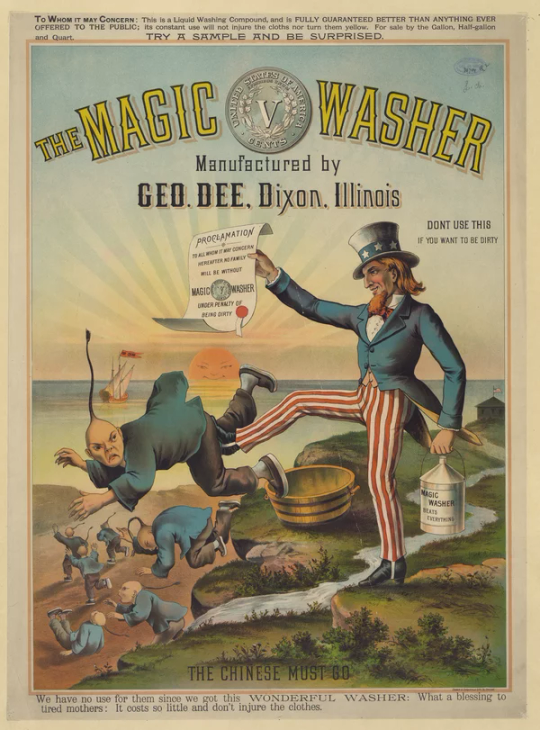
In the pinnacle of the civil rights era, activists used yellow as a term of empowerment — a term they chose for themselves. In some ways, I'm still seeing that today.
When the director of Crazy Rich Asians, Jon Chu, wanted to include a Mandarin version of Coldplay's song "Yellow" in a pivotal scene of his movie, some people were concerned that including it might not fly in such a high-profile movie about Asians. But that was exactly Chu's point. He wrote a letter to the band pleading his case — he wanted to attach something gorgeous to the word.
"If we're going to be called yellow," Chu wrote, "we're going to make it beautiful."
I can't help but think back to a group of people I spoke to late last year.
The Yellow Jackets Collective is an activist group, the name an echo of the 1960s. They're four people in New York City who identify themselves with a wide swath of terms, in addition to yellow: she/her, womxn, brown, Asian American, femme, child of Chinese immigrants, Korean American, 1st gen., first gen. diasporic and "collaborating towards futures that center marginalized bodies."
I send them an e-mail. "Why yellow?"
They point out that they don't just walk around the world calling every East Asian person they meet "yellow."
"Identity ideally is about you and how you feel and what you believe has shaped you," Michelle Ling responds.
I let Ling's words percolate. I don't know if I'll walk around in the world calling myself yellow — maybe to people who have similar experiences to mine; certainly not around people who've flung slurs at me.

Even so, having different words to choose from is itself a comfort. Having yellow in my arsenal makes me feel like my identity doesn't hinge on just one thing — one phrase, one history or one experience.
After a back-and-forth with the group, something they've written stops me in my metaphorical tracks. It's from the Yellow Jackets mantra; a snapback comment that I can't help but appreciate:
"We say Yellow again because at our most powerful we are a YELLOW PERIL and those who oppress us should be afraid. We are watching you. We are making moves."

In “The Travels of Marco Polo,” the people of China are described as “white.” Records left by eighteenth century missionaries also report the skin color of Japanese and other East Asian people as clearly white. Yet in the nineteenth century, this perception quietly gave way to descriptions as “yellow.” In travel books, scientific discourse, and works of art, portrayals of East Asians began presenting them as having yellow skin. What happened in between?

In his 2011 book “Becoming Yellow: A Short History of Racial Thinking,” National Taiwan University professor Michael Keevak delves deeply into the origins and history of how and why East Asians went from being seen as “white” to being classified as “yellow.”
The first suspect implicated in applying the “yellow” label to East Asian faces is the famed Carl Linnaeus (1707-78). At first, Linnaeus used the Latin adjective “fuscus,” meaning “dark,” to describe the skin color of Asians. But in the tenth edition of his 1758-9 “Systema Naturae,” he specified it with the term “luridus,” meaning “light yellow” or “pale.”

It was Johann Friedrich Blumenbach (1752-1840) who went beyond the coloring ascribed by Linnaeus to apply the completely different label of “Mongolianness.” Regarded as a founder of comparative anatomy, the German zoologist did more than just use the Latin word “gilvus,” meaning “light yellow,” to describe East Asian skin color: he also implicated the Mongols, a name with troubling and threatening connotations for Europeans with their memories of Attila the Hun, Genghis Khan, and Timur.
While the references remained anomalous at first, travelers to East Asia gradually began describing locals there more and more as “yellow.” By the nineteenth century, Keevak argued, the “yellow race” become a key part of anthropology.
But the yellow label came associated with discrimination, exclusion, and violence. Just as no one in the world is purely white or black, neither does anyone actually have skin that is deep yellow. By “creating” a skin color and investing traits such as “Mongolian eyes,” the Mongolian birthmark, and mongolism (the old name for Down syndrome), Westerners made the perceived yellow race synonymous with abnormality. They also responded to the arrival of immigrants from Asia by sounding the alarm over the “yellow peril” - a term with a whole range of negative associations from overpopulation to heathenism, economic competition, and political and social regression. The hidden agenda of this racial color-coding becomes apparent when one considers who benefits from a hierarchy that places “yellow” and “black” beneath “white.”

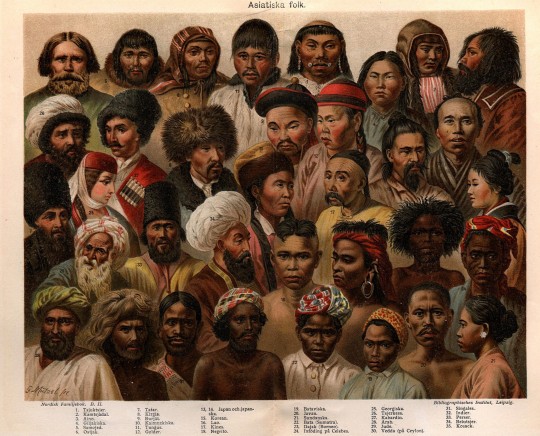
#kemetic dreams#asian#Blumenbach#german#european#exonym#banning exonyms#yellow#white#yellow people#black#black people#racist#conservatism#political#american politics#liberalism#civil rights#racist words#bruce lee#brownskin#brown skin#asian American#asian american literature#asian american history#asian heritage month#asian american author#asian american pacific islander heritage month#stop asian hate#aapi
10 notes
·
View notes
Text
After doing a little more travelling, I'm really coming to appreciate how privileged I am to live where I do because there are three large, nationally-recognized botanical gardens within 25 miles (North Carolina Botanical Gardens, Sarah P. Duke Gardens, and JC Raulston Arboretum) and they're all free! Duke Gardens charges minor parking fees, but the rest of these are entirely free. Every large botanical garden I've visited while travelling has had at least a 20 USD admission fee if not more. And while I was interested in gardening to some extent before I moved to North Carolina, it wasn't until I visited these botanical gardens (and visited them over and over and over again) that I developed my full-blown obsession with horticulture, botany, and taxonomy.
#Personal#🌺🌻#Obviously very privileged where I live for many other reasons#I'm just really appreciating the love for plants and gardens in this region of the US
3 notes
·
View notes
Text
Ideal version of a date with Bert is in a botanical garden where he's nerding out to you about the botanical systematics and taxonomy while you understand only every third word he says yet smile nonetheless cuz the way his eyes spark up is just too cute
#oh but of course allium ursinum s leaves are lanceolate shaped whereas colchicum autumnale s are basal foliage how could i ever mix them up#bert is such a nerd#bertold hoover#bertold#aot#aot headcanons
29 notes
·
View notes
Text

Common Rhododendron or Rhododendron Ponticum
Rhododendron ponticum, called common rhododendron or pontic rhododendron, is a species of Rhododendron native to the Iberian Peninsula in southwest Europe and the Caucasus region in northern West Asia.
Available now on Redbubble
#rhododendron#flowercore#vintagrafica#redbubble#vintage#educational#nature#biodiversity#cottagecore#botany#botanical#artists on tumblr#flowers#scientific illustration#taxonomy
15 notes
·
View notes
Text

12th July 1834 saw the death in Hawaii of Botanist, David Douglas.
David Douglas, a Scottish was born June 25th, 1799 at Scone Douglas to a lower class family., he managed to acquire a modest amount of schooling - he learned Latin, for example - but his real love was the outdoors: animals, birds, and especially, plants and gardens. He managed to get a job as an assistant gardener at Scone Palace, and then he was fortunate to spend several years at the Glasgow Botanic Garden, where he arrived the same year as their new professor of botany, William Hooker, who would later become the first director of Kew Gardens in London. Hooker was only 35 years old when he met young Douglas, and the two hit it off extremely well, which means Douglas learned a great deal about plant identification and taxonomy.
About this time (1823), the Horticultural Society of London, founded in 1804, was looking to sponsor a collector who would go to some far-flung place, collect seeds, cuttings, and sprouts, and bring them back to be grown in the Society's gardens at Chiswick. It just so happened that the man hired to construct the gardens at Chiswick House in west London had previously rebuilt the gardens at Scone Palace, and he offered his opinion: pry that Douglas fellow away from Glasgow and send him out to collect plants. Hooker chimed in from Glasgow and agreed whole-heartedly. And so it came to pass. Douglas was first sent to the east coast of the United States, and although that trip was short - less than a year - it was extremely productive, yielding new varieties of apples and pears and plums (the Washington plum was a bit hit among London fructivores), and gardeners raved about the accomplishments of young Douglas.
In 1824, Douglas was sent out once more, this time to the Pacific Northwest, and this extended venture was a hundred times more productive, resulting in a great change in the landscape of Great Britain. Travelling with factors from the Hudson Bay Company, Douglas ascended the Columbia River, crossed the Continental Divide, climbed a few fourteeners along the way, and identified and collected over 200 new plants. He was the first Englishman to see and bring back cones of the Sugar Pine, the Lodgepole Piine, the Ponderosa Pine, and, of course, the Douglas-fir, all of which would soon be growing in English gardens and on Scottish estates within a year of his return in 1827. A number of Douglas-firs were planted on the grounds of Scone Palace, which makes them nearly 190 years old today (second image), and while they aren't quite as stately as some of the Douglas-firs in the Pacific Northwest, which can top 300 feet, several Douglas-firs in England exceed 200 feet in height, including the Stronardon Douglas-Fir, which is the tallest tree in the British Isles (third image).
Douglas made one more trip to the Northwest, with a most unhappy outcome. He visited Hawaii and became the second European to climb Mauna Loa. However, on his way to climb Mauna Kea, he fell into a wild cattle pit trap that was unfortunately already occupied, and he was trampled to death by an angry bull. Suspicions of foul play arose but were never confirmed. He was only 35 years old at the time of his death. But he lives on in his tree, which incidentally is not a true fir, which is why it is spelled with a hyphen.
Three monuments to Douglas that I discovered, ne is the David Douglas Pavilion at Scone Palace, which is constructed of wood from Douglas-firs grown on the estate. The second is a bust of Douglas at the VanDusen Botanical Garden in Vancouver, British Columbia. The third monument is a cairn in Hawaii at the site of Douglas’s death.
8 notes
·
View notes
Note
One of my biggest fears is the capture of key sciences such as ecology or chemistry by postmodernism. We've seen it happening with medicine. Survival of the biosphere would be much slimmer if we can't categorize deleterious exotics from native species. By the sounds of your newer posts it seems to be happening already. Are things that bad in the US?
Yes, it's starting.
A certain degree of internal criticism is healthy in any field of science. I think the argument against the current species taxonomy system is interesting. That argument criticizes the anthropocentric worldview of Carl Linnaeus. So it does ultimately help the field. But this argument could get out of hand if postmodernists co-opt it and go "don't say species!" That would get tiring. But that hasn't happened yet. For now, the point of the argument is to examine how Linnaeus's dominionism shaped biology perspectives.
But then there's Banu Subramaniam's Aliens essay and the EEB Language Project. Both have the potential to set disastrous precedents in Earth science.
It's interesting to look at the schools involved in EEB Language Project...
UC Berkeley – post-modernism think tank Harvard – conservative neoliberal capitalism think tank Princeton – liberal neoliberal capitalism think tank UC Davis – biggest agricultural university in the country and home to the CLEAR beef and dairy greenwashing project Stanford – great at protecting campus rapists
There's other schools involved but those five stood out to me.
Earth science is interesting because geography is important. There's good Earth science programs in every public university because there's always something of local interest to study. The best program at my tiny state school was the ecology program. That seems to be a common theme at a lot of small state schools. People deride these schools by calling them "party schools." But when you look at a lot of top ecologists, they spent their entire careers at "party schools"
Big names like Harvard, Princeton, and Stanford don't actually give you extra credibility in the Earth science world.
So there's a class dynamic here. You don't need to pay an arm and a leg to access the top Earth science programs. But now, through EEBLP, "prestigious" schools are talking down to the "party" schools. They're basically saying "you working class scientists are so uncultured and problematic!"
Luckily, Earth scientists have been tangoing with corporate capture and greenwashing for decades. They know what bullshit looks and smells like.
And this is still the face of botanical popular science:
youtube
So postmodernists have their work cut out for them lmao
4 notes
·
View notes
Note
I saw one! It bloomed in the Meise Botanical Garden in Belgium and I got to see it! It was awesome!

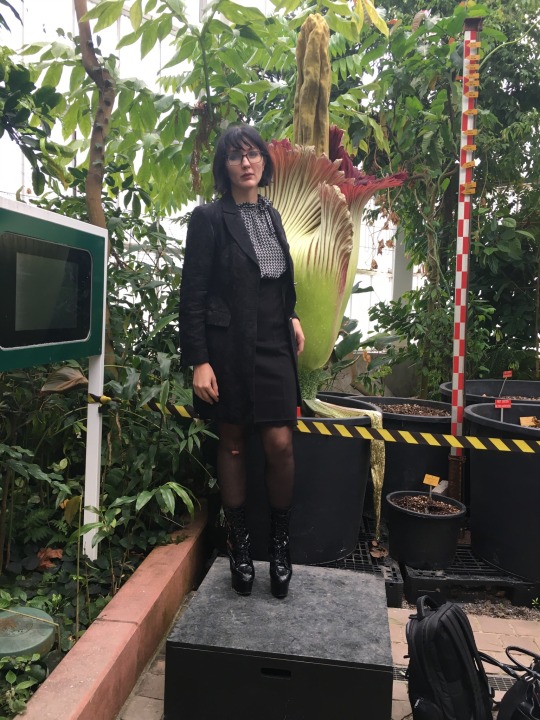
Yes, they had a little photo area so you could stand next to the flower to have your picture taken xD forgive my boring ass work outfit, I literally went there straight after work because how could I NOT go see the corpse flower?
Also it was the birthday of Carl Linnaeus, father of modern taxonomy, which I felt was a very auspicious time to visit a botanical garden.
what's ur favorite flower & why?
Amorphophallus titanum

AKA the "Corpse Flower" because it smells like rotting meat
Latin name means "Giant Werid-looking Penis"
Largest single flower on earth
Bloom once every 2-3 years for 24 hours.
Every time one in the collection of the Denver Botanic Gardens blooms, they open the garden for free to anyone to come see it's Putrid Magnificence for the full 24 hours it's open and there's a huge party about it.
3K notes
·
View notes
Photo

Gasteria spp. Some houseplants provide a beautiful flush of greenery, others feature surprisingly fragrant blooms – and then there are the outliers, the ones that are so odd that you aren’t really sure why you’re attracted to them. For me, gasterias aka ox tongues are in the latter category. With leaves shaped like straps or tongues, these plants and their funky foliage have won a place in my heart as my all-time favorite succulent houseplant. We link to vendors to help you find relevant products. If you buy from one of our links, we may earn a commission. Gasteria is a genus of 29 succulent species native to South Africa and Namibia that have mostly stemless leaves shaped like triangles, spears, straps, or tongues. This foliage grows either in a fan shape, with two opposite rows of leaves, or in a rosette or semi-spiral shape. Usually they produce numerous offsets, creating a clumping growth habit. These succulents can be grown as houseplants or outdoors in the landscape in Zones 9 to 11. Ready to learn more? Here’s what I’ll cover: Gasteria is part of the Asphodelaceae family, which includes succulent relatives such as aloes, haworthias, and haworthiopsis, but also daylilies and red hot pokers. Depending on the species, they can be as short as one inch tall or as large as two feet tall. These succulents tend to have a wider spread than height, ranging from four inches to two feet wide. Quick Look Common name(s): Gasteria, ox tongue Plant type: Evergreen succulent Hardiness (USDA Zone): 9-11 (outdoors) Native to: Mexico, Central and South America, Southeast Asia Bloom time / season: Usually spring and summer Exposure: Part sun to light shade; bright, indirect light Soil type: Succulent potting soil, well draining Soil pH: 4.9-7.6, acidic to alkaline Time to maturity: 2-5 years Mature size: 4-24 inches wide x 1-24 inches high (depending on cultivar) Best uses: Houseplant, rock garden, fairy gardens, planters Taxonomy Family: Asphodelaceae Subfamily: Asphodeloideae Genus: Gasteria Species: Armstrongii, batesiana, bicolor, glauca, glomerata, pillansii Some species have smooth leaves with a sharp point at the end, while others have foliage covered with small bumps known as tubercles. Still others are so densely covered with tubercles that their leaves have an extremely rough texture. They may have toothed leaf margins, or pearl-like bumps on the edges of their foliage, and some species have smooth leaf edges. Leaf color and pattern also varies greatly depending on the species, variety, and cultivar. Colors range mostly from light to dark green, to grayish or bluish green, although some cultivars have yellow, white, silver, cream, or pinkish orange variegation. Plants develop reddish tones during periods of stress such as drought or intense sunlight. ‘Little Warty’ with darker colored outer leaves from sun stress. Photo by Kristina Hicks-Hamblin. Gasterias produce long inflorescences which bear red, pink, or orange blooms with bulbous bases. If they are pollinated by sunbirds, hummingbirds, or botanically inclined humans, green fruits form, containing black seeds. Ripe fruits will turn brown, crack open, and the seeds are dispersed by the wind. G. glomerata in bloom. In their native ranges, they tend to grow in savannahs and other semi-arid habitats, nestled in among other vegetation, rocks, or in the crevices of steep cliff faces. While gasterias are adaptable and make wonderful houseplants, they can also be cultivated outdoors year-round in USDA Hardiness Zones 9 to 11, depending on the species. How to Grow Gasteria Gasterias are generally easy to care for, and while some species might have slightly different preferences, I’m going to describe the growing conditions favored by those most commonly found in cultivation. Soil Gasterias can be successfully grown in a wide range of growing mediums, provided it has sufficient drainage. A good option to start with is a mix made of 50 percent organic materials and 50 percent mineral content, which will ensure excellent drainage. These succulent plants can grow in acidic to somewhat alkaline conditions depending on the species – a pH range of 4.9 to 7.6. Choosing a Pot Gasterias have quite small root systems compared to the size of the vegetation – so pick a container that is just big enough to contain its roots rather than choosing a large pot for it to grow into. Make sure it has drainage holes. Two-inch pots will be the right size for the smallest gasteria specimens, while three- or four-inch pots are big enough for most others since these are slow growing plants, and most species are quite compact. Light In their native ranges Gasteria species grow primarily in shaded or semi-shaded positions – behind or under other types of vegetation or rocks. Outdoors, they do best when direct sun is limited to about four hours in the morning, with bright, indirect light the rest of the day. Gasterias don’t like full sun, but filtered sun is ideal. Photo by Kristina Hicks-Hamblin. Indoors make sure your succulent receives plenty of bright light. You may need to check your lighting conditions with a light meter – aim for around 800 foot candles – and if needed, supplement with a grow light. If the plant is losing its compact growth habit and its foliage is turning a lighter color (usually pale green), it is likely not receiving enough sun. However, if it takes on a reddish color, it may be an indication that it is exposed to too much direct sun. Water While gasteria succulents are drought tolerant, regular watering will keep them looking their best. Photo by Kristina Hicks-Hamblin. You need to allow the growing medium to dry thoroughly between waterings. In summer this may mean watering approximately once a week, while in winter, you may be able to go for a month between waterings, depending on the day length and temperature. Avoid pouring water directly onto the vegetation – instead, water the surface of the growing medium or use the bottom-watering method. It’s important not to water too frequently as soggy conditions can lead to rotting, you can use a moisture meter to guide you. Temperature Some Gasteria species are tolerant of light frosts – down to about 25 or 30°F, but others will sustain damage below 32°F. Photo by Kristina Hicks-Hamblin. If you like to keep your succulents outdoors during the summer months and aren’t sure which species you’re growing, play it safe and return the plant indoors before the temperature drops below 50°F. In general, these succulents are happy at the range of temperatures commonly found indoors. No upper heat tolerance has been established and gasterias tend to be tolerant of high heat as long as you provide protection from direct sun. Humidity Although some gasterias are adapted to humid coastal conditions, most of them will do just fine at humidity ranges between 40 to 50 percent. Fertilizing Fertilize gasteria only during the growing season using a mild, balanced fertilizer. I like to use Dr. Earth’s Pump and Grow Indoor House Plant Food, which has a 1-1-1 NPK ratio, and apply it every time I water during the growing season. Dr. Earth Pump and Grow You can find Dr. Earth’s Pump and Grow Indoor House Plant Food in 16-ounce pump bottles from Arbico Organics. If you use a stronger product – up to 16-16-16 (NPK) is appropriate, apply this only once every three months during the growing season. You may also add some compost or worm castings to the growing medium when repotting to help feed the plant. Repotting Gasterias should be repotted every three to four years. You may need to repot sooner if the plant is growing in the wrong type of soil or the container it’s currently in lacks drainage holes. Even if the plant has not yet outgrown the container it is currently growing in, it’s best to refresh the potting mix even if you aren’t going up a pot size. Species and Cultivars to Select Gasterias are a fascinating bunch, with 29 or more different species and hundreds of cultivars. Let’s have a look at a few of these options! Fuji Yuki ‘Fuji Yuki’ means the snow of Mount Fuji. Thought to be a G. nitida cultivar, ‘Fuji Yuki’ has a clumping growth habit with fat, tongue-shaped leaves streaked in white, cream, and silver, with bits of green peeping through. Gasteria ‘Fuji Yuki.’ Photo by Kristina Hicks-Hamblin. ‘Fuji Yuki’ reaches up to five inches tall and three to 10 inches wide, growing either in two opposite rows, or in a spiral or partial rosette shape. You’ll find ‘Fuji Yuki’ plants in 3.5-inch pots available from Planet Desert via Amazon. Glomerata G. glomerata, also known as Kouga gasteria, is one of the more compact members of this genus, reaching only four inches tall and spreading up to a foot wide via numerous offsets. G. glomerata. Photo by Kristina Hicks-Hamblin. Composed of short, thick, grayish or blueish green leaves that are tongue or strap shaped, the foliage remains in two opposite rows as the succulent matures. These succulent plants have a clumping growth habit, thus the species name glomerata. Little Warty ‘Little Warty’ is a hybrid cultivar – a cross between G. batesiana and the hybrid, Gasteria ‘Old Man Silver.’ It features light and dark green variegated leaves and is the most popular and easiest to source of the gasterias, at least in North America. G. batesiana ‘Little Warty.’ Photo by Kristina Hicks-Hamblin. With leaves covered by tiny tubercles, ‘Little Warty’ has both visual and physical textures that are fascinating to behold. You’ll find ‘Little Warty’ specimens for purchase in your choice of a two- or four-inch clay or plastic pot from the Succulents Box Store via Amazon. Propagation There are a few different methods you can use to propagate new gasteria plants: from seeds, leaf cuttings, offsets, or divisions. Let’s take a quick look at each: From Seed While the process of growing succulents from seed isn’t too difficult, there is a time commitment of about a year from start to finish. Sow seeds in moist seed-starting medium an eighth of an inch deep and a quarter of an inch apart. Use a fungicide or biofungicide such as Mikro Root, available at Arbico Organics to prevent damping off. Keep the potting medium evenly moist and use a heat mat to maintain temperatures of 77°F during the day, and 68°F at night. After germination, which takes one to three weeks, move the pots into a location where they will be exposed to bright, indirect light and continue to keep the medium moist. Approximately three months after germination transition to watering less frequently – down to once or twice a week, depending on your climate. Keep these tender young seedlings in indirect bright light, and allow them to continue growing in the same container, transplanting only after a full year. You can learn more about how to start succulents from seed in our guide. From Leaf Cuttings The best time to propagate ox tongue plants from leaf cuttings is in the spring or summer. It’s a simple process of twisting off one of the bottom leaves from the gasteria, dipping it into fungicide, and leaving it in a dry, bright location to allow the wound to callus over the course of two weeks. Photo by Kristina Hicks-Hamblin. After two weeks, fill pots or a tray with moistened growing medium and set the leaf cuttings horizontally across the surface of the medium. Cover just the callused wound end with a little of the substrate. Keep in bright indirect light, with a few hours of direct sun at most, and keep the growing medium moist. Expect the leaf to root within a few weeks, after which small plantlets will start to form at the wound. Allow these to keep growing in the same pot for one to two years before transplanting. Learn more about propagating succulents from leaf cuttings. From Offsets Most gasterias produce numerous pups, and you can remove these to start new plants. Offsets should be at least one third the size of the mother plant, and the best time to separate them is in spring. Photo by Kristina Hicks-Hamblin. Start by removing the parent plant from its pot. Carefully pull as many offsets as you want to separate away from the clump, and remove the growing medium from their roots. Place the new plant into a pot filled with succulent potting soil. Rather than watering right away, wait a week, then resume watering as normal. Learn more about propagating succulents from offsets. Transplanting If you have purchased a new gasteria succulent and you want to pot it up, you’ll need a container that’s fairly snug, with about 30 percent more room to allow the plant to expand. And it absolutely must have drainage holes! Photo by Kristina Hicks-Hamblin. Unpot the plant, remove and discard the potting medium, and inspect the roots. If the roots look healthy, you can repot it straight away. Trim any roots that look dead or mushy, then treat with a fungicide, and allow the roots to callus over for a week in a dry location in indirect, bright light. Fill the new pot with a shallow layer of growing medium and insert the plant. Adjust the amount of growing medium beneath the root ball so that the crown of the plant is about a half to one inch from the rim of the pot. Finish filling in with growing medium and wait a week before watering. Pests and Disease Gasterias aren’t particularly attractive to most pests. Disease is fairly rare as well, though there are a few problems to look out for. If you’re growing yours outdoors, both rabbits and deer may be tempted to take a nibble. The usual common garden and houseplant pests may come to visit, such as scale insects, mealybugs, and aphids, though it’s not common. Rotting in succulents is a problem that is typically caused by overwatering or potting medium that lacks drainage. Ox Tongues Are No Yoke Whether grown indoors or out, gasterias are sure to delight. They can be used in mixed planters or succulent fairy gardens – but be sure to use companion plants that have similar light and water requirements, such as haworthias and haworthiopsis. When did you first fall in love with gasteria succulents? For me it was a ‘Little Warty’ who charmed me from day one! Feel free to share your stories (and photos) in the comments section below. And if you have any remaining questions about gasterias, drop them there as well! And for more information about growing succulents, add these guides to your reading list next: Photos by Kristina Hicks-Hamblin © Ask the Experts, LLC. ALL RIGHTS RESERVED. See our TOS for more details. Product photo via Arbico Organics. Uncredited photos: Shutterstock. !function(f,b,e,v,n,t,s) if(f.fbq)return;n=f.fbq=function()n.callMethod? n.callMethod.apply(n,arguments):n.queue.push(arguments); if(!f._fbq)f._fbq=n;n.push=n;n.loaded=!0;n.version='2.0'; n.queue=[];t=b.createElement(e);t.async=!0; t.src=v;s=b.getElementsByTagName(e)[0]; s.parentNode.insertBefore(t,s)(window, document,'script', ' fbq('init', '176410929431717'); fbq('track', 'PageView'); Source link
0 notes